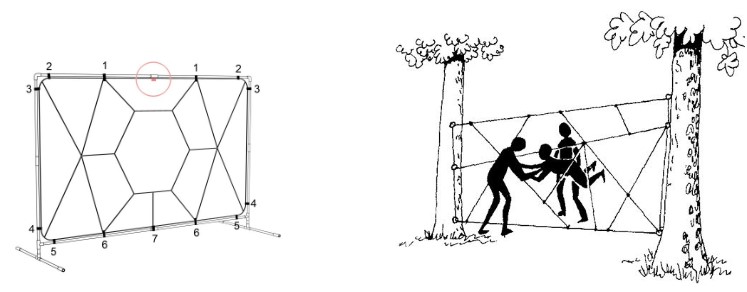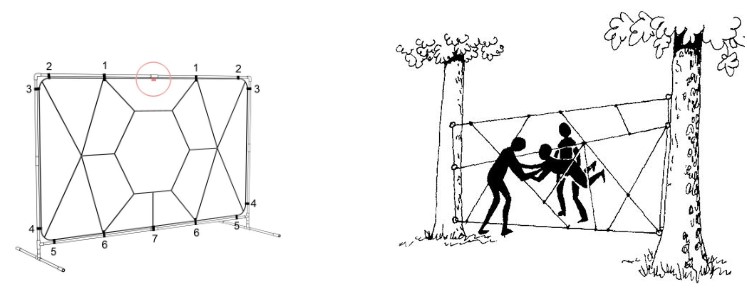Spider Web Activity
Introduction & Motivation
Filtration and separation are key aspects of chemical engineering and have applications everywhere from cleaning waste water to petroleum production. This fun activity will serve as an introduction to filters/separations and a way to simulate what happens with various types of filters.
Materials
- 2 Long pieces of rope
- Frame for web (Two trees work well!)
- Long, differently colored string
Procedure
Before the activity, create a web by tying the two long pieces of rope between two trees or sturdy poles. Make one close to the ground and one a few inches shorter than the tallest student. The area between these ropes will be called the “web”. Use the multiple colors of strings to divide the web into different areas, with varying size holes (shown above).

- Divide students into teams and task them with getting each member through the web without touching any strings.
- Next, ask each team to perform this again except each hole in the web can only be passed through once per team. (This is analogous to the concept of fouling, a property which we try to avoid in filters)
**Challenge: To highlight the concept of selectivity in filtering, add the rule that you can only pass through the web via a hole that has at least one string matching the color of something that student is wearing. This is an example of how filters can be functionalized to attract certain types of molecules!**
Discussion
- Draw the connection between the spider’s web and filters. Ask the students what filters they know of and how do they know those filters are not working well. Did the web/filter separate the teams successfully, or was everyone able to make it across successfully? (Ideally, filters will separate certain components from a mixture. An example of this is separating liquid coffee from coffee grinds! We know the filter is not working well when we get a bunch of grinds in our cup of coffee.)
- If we were trying to separate team members from each other, how could we achieve this? (Changing the sizes of the holes, changing the colors of the strings if the challenge is performed)
- Think of filters on a broader basis. What are other things we can use to target specific components of a mixture to separate them out? (Magnets, something that will “eat” the target as it passes through, etc.)

